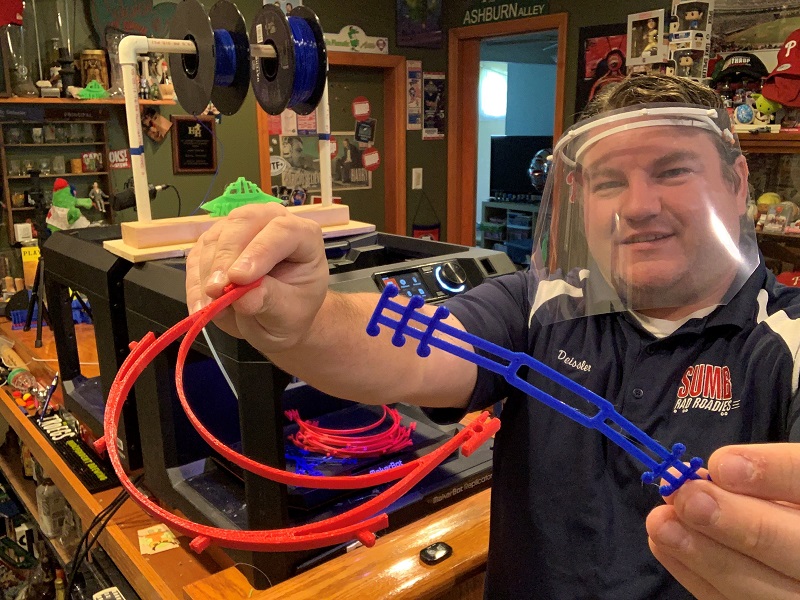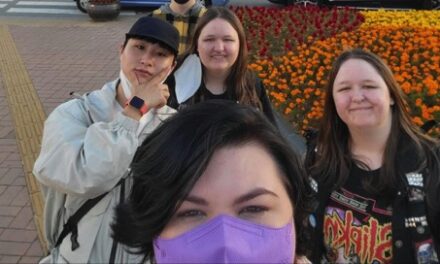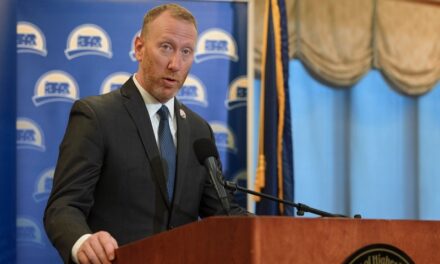In the midst of shifting his middle school STEM classes to an online space this spring while simultaneously juggling online classes with his children at home, Kevin Deissler ’05 didn’t need something else to do. But when he discovered simple instructions for face shields and ear savers on Twitter, he knew there was something he could do.
Deissler, married to fellow Ship alumna Kristin (Bucy) Deissler ’04, teaches robotics, innovation design, and manufacturing classes for seventh and eighth graders at Klinger Middle School in Southampton. He frequently encourages his students to follow tags, trends, and people on Twitter who are doing creative and innovative work. When stay-at-home orders began this spring, he found the blueprints for the personal protective equipment on Twitter and downloaded the files.
“We had two 3D printers at the school not being used. I thought, ‘What can I do?’”
Normally, Deissler would be working with students to design and manufacture yard games. He would have loved presenting this type of problem to his students, asking how they might design effective PPEs based on need. This spring, in a virtual space, that couldn’t happen. But he was able to take advantage of available resources and help a much-needed cause.
“There can be this mental breakdown that happens when you can’t do what you need to do or are usually able to do,” he said. “But being able to contribute to the cause is helpful. It’s doing what I can.”
Deissler adjusted the design so that he could stack ear savers ten at a time. He estimated it took about three hours to complete eleven ear savers, and about seventeen hours to do ten face shields. So far, he has produced and donated about 200 of each to Lower Bucks Hospital and local nursing homes.
A parent who recently called Deissler to check on her daughter’s progress this spring mentioned that she had been working long hours as a nurse. Deissler told her about his project, and now, he’s also donated to nurses at Einstein Medical Center.
“It’s been a global effort to keep up with demand, why reinvent the wheel?” he said. “In my mind, I’m not doing anything special, except to help the wartime effort.”
Once Deissler and his students return to the classroom, he hopes to look at other global issues and what they might manufacture to solve a problem. By using the 3D printer, it’s easier to try, tweak, improve, and mass produce products.
“When you have the ability to create anything, what do you do that’s creating good?”





